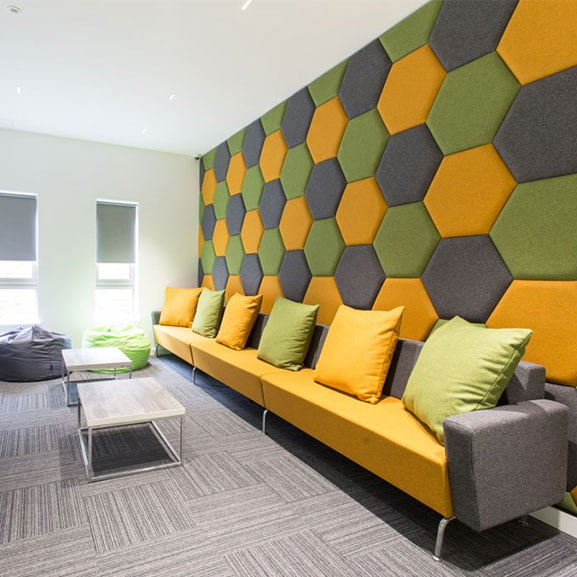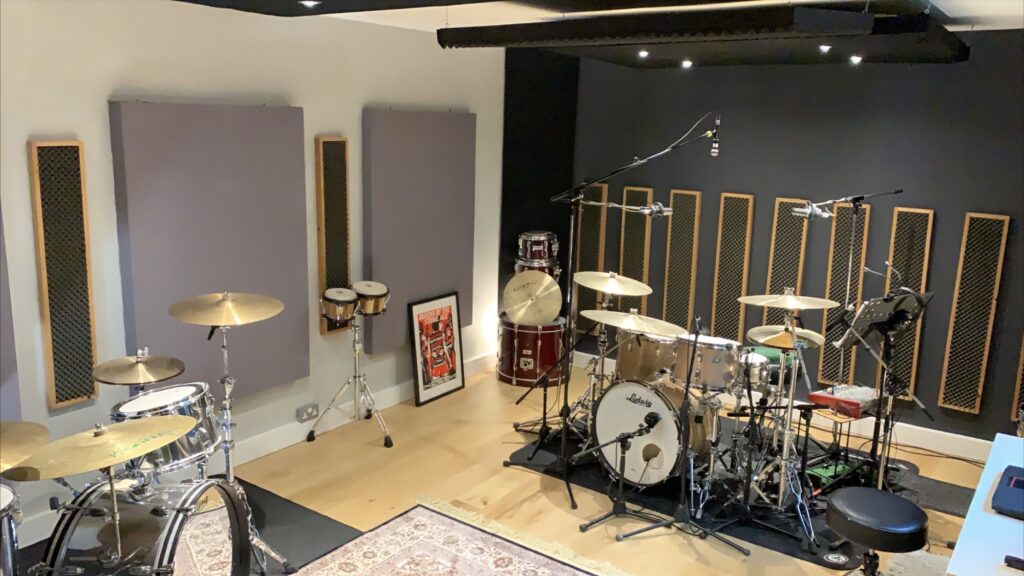In the pursuit of optimal sound quality and control within indoor spaces, the installation of acoustic panels plays a pivotal role. However, determining the quantity of panels needed involves a nuanced understanding of various factors. From room size to material characteristics, several elements influence the number of acoustic panels required for effective sound management.
Factors Influencing Acoustic Panel Quantity
Here are the some factors that are affecting acoustic panels quantity:

1. Room Size and Volume:
The size and volume of the room significantly impact the number of acoustic panels needed. Larger spaces with high ceilings tend to require more panels to effectively control reverberation and sound reflection.
2. Purpose and Functionality:
The intended use of the room influences acoustic panel requirements. Spaces with high occupancy or frequent use, such as auditoriums or classrooms, may necessitate more panels to accommodate diverse sound conditions.
3. Acoustic Goals and Objectives:
The desired acoustic environment dictates the quantity of panels needed. Rooms requiring precise sound clarity, such as recording studios or conference halls, may demand a higher density of acoustic panels compared to areas where ambient noise reduction is the primary goal.
4. Surface Materials and Construction:
The composition of walls, floors, and ceilings affects sound absorption and reflection. Rooms with hard, reflective surfaces typically require more acoustic treatment to mitigate reverberation and achieve optimal sound balance.
5. Placement and Coverage:
Strategic placement of acoustic panels is crucial for effective sound control. Identifying critical reflection points and primary sound sources helps determine the optimal distribution and coverage area of acoustic panels.
6. Budget and Cost Considerations:
Budget constraints may influence the quantity of acoustic panels installed. Balancing cost-effectiveness with acoustic performance is essential to achieving desired sound quality within financial limitations.
7. Aesthetic Preferences:
Aesthetic considerations, such as panel design, color, and integration with existing décor, may influence the number of panels chosen. Selecting panels that complement the overall aesthetic of the space ensures both acoustic functionality and visual appeal.
Contact Waseem Muhammad Technical Soundproofing Expert in Dubai: +971 50 209 7517
FAQs:
Can I install too many acoustic panels in a room?
While acoustic panels are designed to improve sound quality, excessive paneling can lead to over-dampening, resulting in a dead or unnatural acoustic environment. It’s essential to strike a balance between absorption and reflection to maintain a natural sound ambiance.
Are there alternative solutions to acoustic panels for sound control?
Yes, alternative solutions such as diffusers, bass traps, and acoustic ceiling clouds can complement or substitute traditional acoustic panels based on specific sound control requirements and aesthetic preferences.
Can I install acoustic panels myself, or do I need professional assistance?
While DIY installation is possible for smaller-scale projects, complex installations or larger rooms may benefit from professional expertise to ensure proper placement and optimal acoustic performance.
How often should acoustic panels be replaced or maintained?
Acoustic panels generally have a long lifespan with minimal maintenance requirements. Periodic cleaning and inspection for wear and tear are recommended to ensure continued effectiveness and longevity.
Understanding these factors and addressing them thoughtfully ensures the optimal quantity and placement of acoustic panels, ultimately contributing to a balanced and immersive sound experience within indoor environments.




